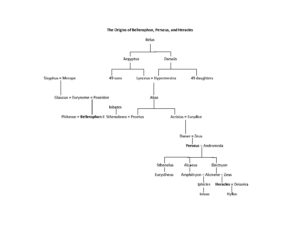προελθοῦσι δὲ ἐς τὸ πρόσω μνῆμά ἐστιν Εὐρυσθέως: φεύγοντα δὲ ἐκ τῆς Ἀττικῆς μετὰ τὴν πρὸς Ἡρακλείδας μάχην ἐνταῦθα ἀποθανεῖν αὐτὸν ὑπὸ Ἰολάου λέγουσιν. ἐκ ταύτης τῆς ὁδοῦ καταβᾶσιν Ἀπόλλωνος ἱερόν ἐστι Λατῴου καὶ μετ᾽ αὐτὸ Μεγαρεῦσιν ὅροι πρὸς τὴν Κορινθίαν, ἔνθα Ὕλλον τὸν Ἡρακλέους μονομαχῆσαι πρὸς τὸν Ἀρκάδα Ἔχεμον λέγουσιν.
- Map
- Pre Reading
- Post Reading
- Culture Essay
As Pausanias reaches the borderland between Megara and Corinth, he alludes to two stories in the last paragraph of Book 1. First, after Heracles completes his labors and his earthly existence is finished, Eurystheus continues to persecute the descendants of Heracles who flee to Athens. There Eurystheus meets the Heracleidae in battle, is defeated, and attempts to return to Argos. According to some versions, Iolaus, Heracles’ nephew, catches the King in his flight and puts him to death near the Scironian rocks. According to Euripides and others, however, Eurystheus’ last words prophesy that his body, if it is buried in Attica, will act as a talisman, protecting Attica from invaders (cf. Eur. Heracleidae 859ff., 1026ff., Apollod. 2.8.1; Strabo).
Second, Hyllus, the son of Heracles, is instructed by the Delphic oracle to wait to return to the Peloponnese “until the third fruit” and that victory would come “at the Narrows.” Hyllus interprets the oracle to mean that he should attack after the third harvest at the narrows of the Isthmus of Corinth. Yet when he attacks, he meets his end at the hands of Echemus, King of Tegea. When the descendants of Heracles finally return to the Peloponnese, they are led by Tisamenus, son of Orestes, in the third generation after Heracles at the narrow entrance to the Gulf of Corinth (Paus. 2.18.7, 8.5.1; Hdt. 9.26; Thuc. 1.12; Apollod. 2.8.2; Diod. 4.58). The return of the Heraclids to the Peloponnese is thus connected with the Dorian invasion in the aftermath of the fall of Troy.
In Pausanias’ description of the road to Corinth, consider the variety of monuments and stories (theoremata and logoi) that he reports and see if you can explain why each of them make sense in their given location near the boundary between poleis.
There are two versions of Eurystheus’ demise. Which one does Pausanias follow?
